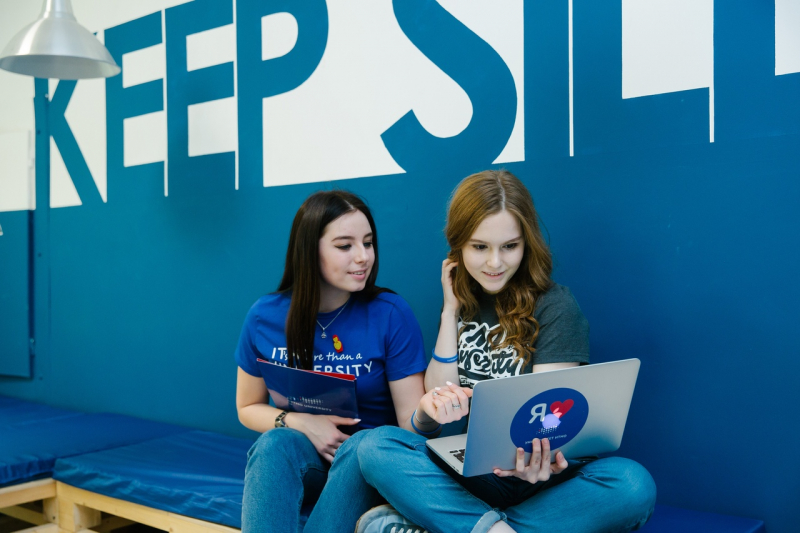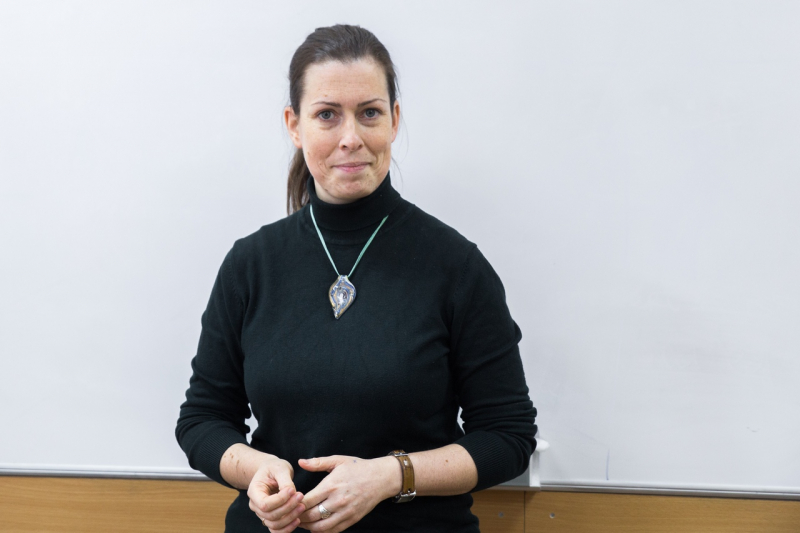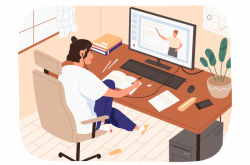The learning switch
Aleksandr Maiatin, an associate professor at the Information Technologies and Programming Faculty, touched on the topic of “blended learning for hungry students.”
He pointed out that many of ITMO University’s students are ambitious individuals who are used to being actively involved in their studies. These students wish to know why their professors choose to conduct certain classes on-site or remotely. For this reason, the blended model must easily switch between the two modes depending on the students’ needs and motivation levels.
Staying in shadows

During an end-of-academic-year survey, students were asked what they would consider the advantages of distance learning. The findings made it possible to highlight several aspects that make distance learning appealing to students.
- “I can’t be present in class” – the student is in quarantine, sick, or not willing to be present in crowded places.
- “I have my own tempo” – even though all students at ITMO are talented, they all have their own rhythm. Some can’t keep up with the professor, some like to listen carefully and write down the notes later – and online learning gives them that opportunity.
- “I don’t do well in groups” – it’s important to point out that for some students, socializing can be more taxing. To them, presenting a report in front of others is a huge stress, and distance learning is a perfect solution.
Therefore, the new blended model should include concepts such as online presence as a substitute for the physical kind; a personal progress card, which would allow students to cover material at their own pace; and learning from home, in which a student learns in an environment they find comfortable.
Gauging involvement

One advantage of distance learning is the ability for the university to bring in third-party specialists more frequently. Its remote nature eliminates time and resources spent on travel and the like, making such offers more appealing and less demanding for international professors or entrepreneurs.
It should be noted that distance learning tools (recorded lectures, files, etc.) can’t replace a teacher or a mentor – they remain the carrier of knowledge and experience. If that paradigm shifts, that might result in issues with discipline and involvement among students.
In her report Aleksandra Shparberg, a tutor at ITMO’s Foreign Language Training Center, noted that students, having the moral right not to use their camera, can lose attention or “sleep in” during lectures. The speaker suggested asking students to share their thoughts in the chat in response to specific questions or to ask them to participate in a discussion. In the case of low involvement, teachers always have the option of deducting points – or giving extra to students who show interest.

Aleksandr Maiatin, for his part, pointed out that in the perfect blended learning scenario, each teacher would have an assistant, as giving a lecture, managing slides, and responding to questions in the chat is a complicated task for a single person.
Assessment tools
As noted by Aleksandr Maiatin, “All technical control tools only work once. As soon as students find out how they’re being controlled, it’ll only take them a week to learn how to game the system.”
In-person tests, lab classes, and exams remain the most convenient and reliable ways of assessing students’ knowledge. So far, distance learning has yet to offer anything on that level.
One solution is to use individual surveys, but, unlike their offline counterparts, these require a lot more in terms of time consumption.

Setting terms, staying in touch
Joseph Taylor, a tutor at ITMO’s Foreign Language Training Center, explained how to maintain a transparent and respectful tone in conversations with students. In his report, he shared his own experience: at the start of a new semester, he explains to students what he expects from them and what they can expect from him as well as goes through the assessment procedures, deadlines, and forms of contact.

The speaker also noted that, in addition to conventional emails, this semester he also offered his students to join a Telegram chat – and remained pleased with the experiment. In his own words, it liberates teachers from the need to answer similar questions multiple times, as well as makes students more self-reliant: when asking questions in the chat, they often find ways to resolve their issues without waiting for the teacher’s response.
The physical “absence” of the teacher and the university itself increases the distance between them and the student, which is why it’s important to open up as many communication channels as possible – all in order to prevent students from feeling as if they’re left on their own. If they can’t visit a professor in person, then they can always message them or call them by phone or Skype.





